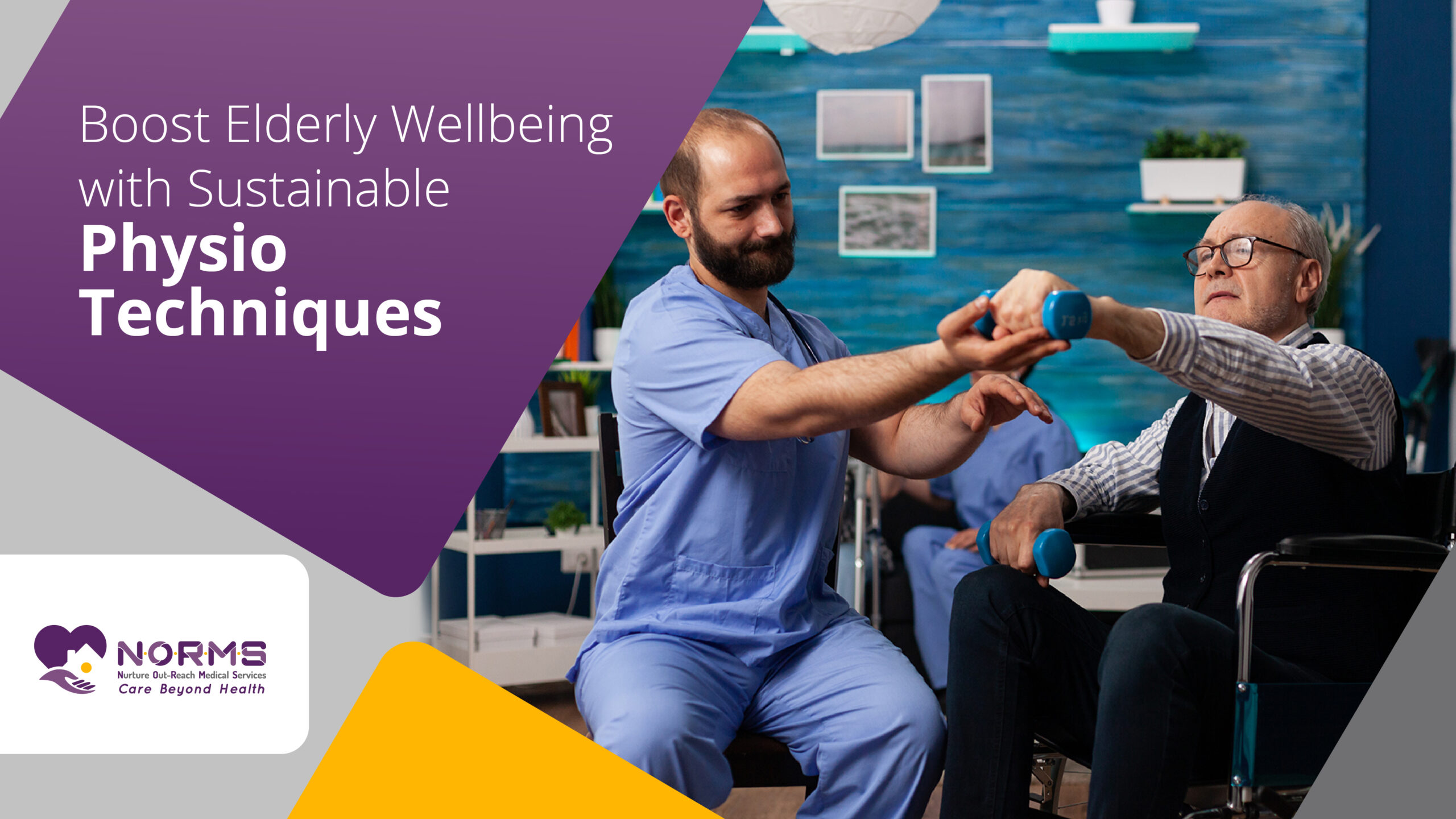
The ageing population is growing, especially at the time of which the adoption of environmentally-friendly physiotherapy schemes becomes essential to the efficient health of seniors. Let us examine the vital role of sustainable physio techniques in ensuring the health and deliberateness of old age people.
Sustainable physio practices are conducted by adopting green tactics within physical therapy that do not compromise the health of both seniors and environmental resources. There are a few techniques that advocate the less totally unwasteful energy usage and the use of reusable materials.
For elderly persons, green physiotherapy is marked by holistic medical practice which works to retain physical health and mobility and, in doing so, participates in ensuring a better future. They provide the elderly with the agency to live a healthy, independent, and environmentally friendly life, which differentiates them from the conventional medical methods.
Using durable and reusable exercise equipment such as resistance bands, stability balls, and weights made of recycled stuff will be a key element in keeping our carbon footprint minimal. This not only eliminates the utilisation of one time use materials but also drastically minimises the amount of waste generated during physiotherapy consultations.
Considering aquatic exercises as a component of the therapy sessions, as well as using the natural water resistance mechanism. Such a water method of treatment is also highly effective in joint care while relying on the clearly seen thing, which is a water case natural element, thereby being a bold move to sustainable approaches.
Designing a series of physiotherapy classes on outdoor settings in which patients would enjoy these natural environments while receiving the fresh air and light needed. However, this perspective expands to both physical and mental aspects of wellbeing, where finally the fitness gets through the process.
Implementation of energy-saving activities within a rehabilitation centre is a very vital factor that will include usage of energy-saving lighting, heating as well as cooling systems. The result will be minimization of the negative impact of healthcare facilities on the environment, and designing of a convenient space that will serve as a home for elderly patients.
Providing mesh bags for the disposal of trash and choosing mats, cushions, and props made from environmentally friendly and compostable material. This consequently makes it possible to use equipment in physiotherapy that produces positive rather than harmful effects on the environment and includes the minimum ecological risk.
Consisting of low-impact cardio exercises, like cycling or elliptical training, to select the type of joint, and drop the chances of injury too. Such exercises offer us a chance to have a good cardio workout and conveniently cater to the ageing individual.
Involving seniors in community gardening activities that require only light physical tasks for example carrying a chair or pulling weeds. This not only combats obesity but also gives room for community building and environmental sustainability by offering organised gardening.
Placing an emphasis on mindfulness and relaxation that involves deep breathing and meditation as a means to foster mental wellness is also vital. Such means of self care don’t only improve one’s physical state but also consume very little resources and thus can be called as ideal sustainable ways of life.
Ideas of walkways making for specific trails that cater to the senior members’ preferences should be promoted such that both safety and fun can be guaranteed. Insertion of natural elements in these trials will provide an additional layer of therapy, allow for extended health benefit, in addition to outdoors physical participation
Utilising solar-powered rehabilitation equipment like treadmills and bikes to pump in power could turn this opportunity into a reality. This means that no longer everybody handles conventional energy sources and the lessening dependence on renewable energy within a healthcare setting is attained.
11. Difficult postures and holding long stretches.
In other words, creating adaptive yoga and stretching exercises that are applicable to the variations of elderly people without forgetting about their needs and abilities.
Giving away designed mobility equipment that is made from recycling or sustainable materials. Such devices, such as canes and walkers, are applauded in addition to contributing in lessening the environmental impact of health care utensils
Encouraging group exercise classes for seniors, promoting social interaction and the feeling of being part of the community. This not only helps them to stay physically fit but also influences their mental and emotional states.
Telehealth services for home physiotherapy purposes are needed to be combined. They, also, improve travel accessibility for elderly people which reduces the carbon footprint in transportation at the same time.
Creation of individualised home exercise programs that are accessible, fun to follow, and maintainable. This is the very reason why seniors prefer the physiotherapy routines on their own at their own home which simply promotes a sustainable approach to staying healthy.
Finally, the utilisation of ecologically friendly physio methods in turn not only has positive effects on the health and wellbeing of the old people but also contributes to the global call about environmental sustainability. This win-win collaboration creates a ripple effect of positivity across individual lives as well as the environment with the ultimate objective of building a future that is simultaneously sustainable and awareness- rich.
Sustainable strategies might favour environmental-friendly ways, incorporating reusable materials and energy-saving methods which don’t sacrifice the quality of physical therapy.
Certainly, you can adapt some methods to use at home, as this would make them practical to apply and eco friendly for the elderly.
Indeed, sustainable physiotherapy acknowledges different needs and provides custom-made exercises adapting to the wide spectrum of preferences amongst the elderly population.